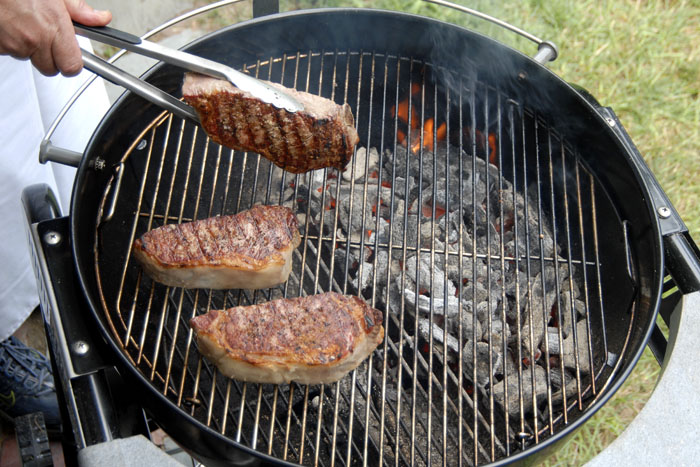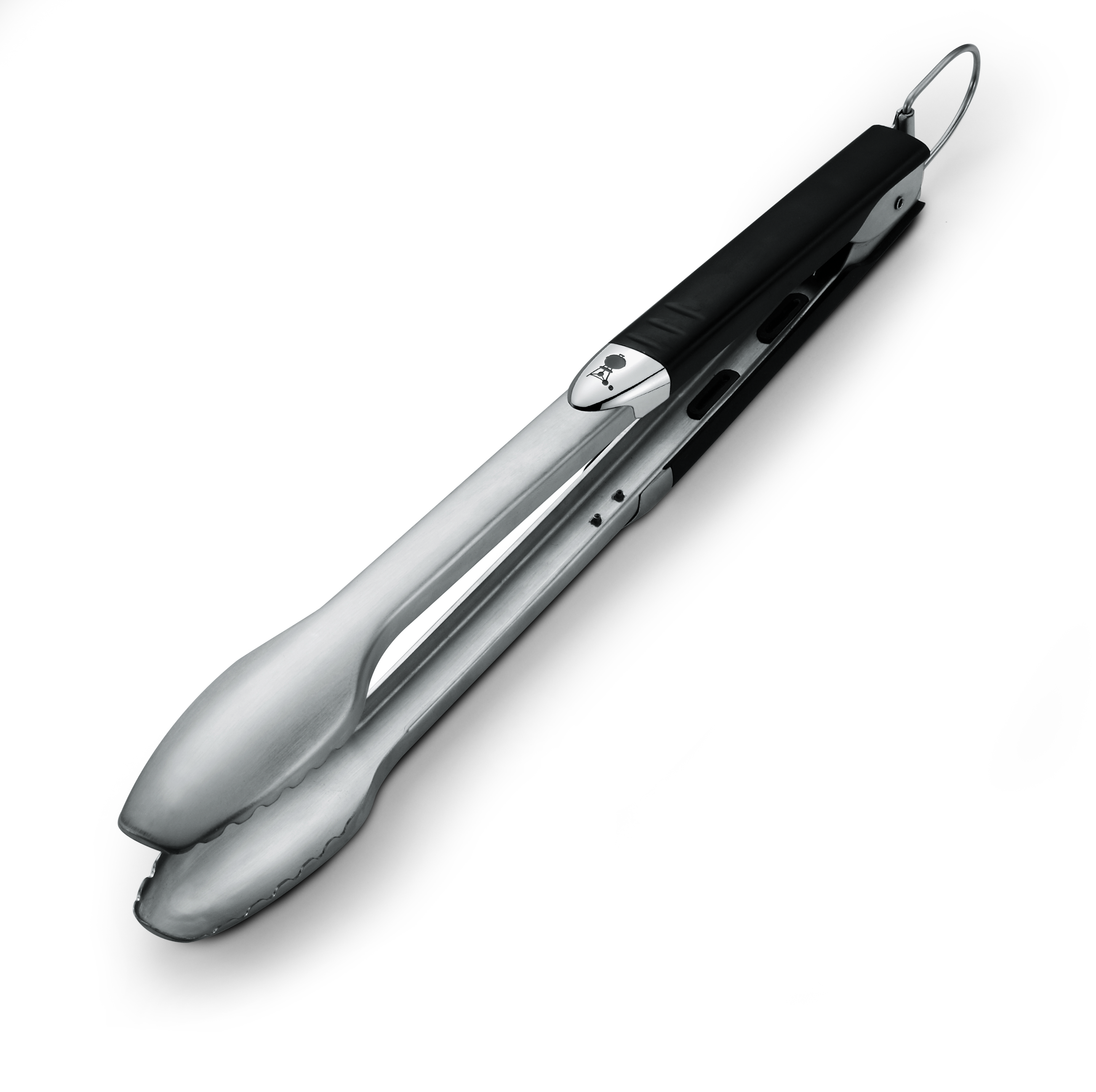Grill tongs are extensions of your arm and hand and allow you to work over a scorching fire without fear of getting burned. For most purposes one pair of tongs will suffice. However, having a backup pair is also a good idea. Spring-loaded tongs can break making them impossible to use.
Also, if you have a large piece meat, such as a 3-inch-thick Porterhouse, or something bulky and awkward, a whole chicken for instance, having two sets of tongs to lift is a practical idea.

Choosing the right tongs requires a balance of considerations. While the final decision involves personal preferences, there are some characteristics that can be judged objectively.
Size
No, absolutely not! Do not try to use your kitchen tongs when cooking on a grill. You’ll hurt yourself!
A good length for grill tongs is about 15 to 17 inches, from tip to the butt of the handle. If you go much longer, you’re likely to have issues wielding them easily. On the other hand, going shorter increases your risk of getting burned.
When shopping, see if you can hold the tongs over a grill that is close to the size of your grill at home. Make sure the tips of the tongs comfortably reach to the center of the grill grid, approximately half the grill’s diameter.
This way, when working the grill you can move around the grill to turn and pickup and flip grilled items, rather than reaching over the grill surface.
Feel
In your hand, the tongs’ feel should be comfortable and solid, instilling a sense of control. A slight resistance in the squeeze lets you know that the spring inside is strong. That resistance, however, should not be so strong that it causes hand fatigue after a relatively short time on task.
Flimsy tongs that don’t hold grilled items no matter how forceful the grip are no good to anybody. You’ll know them when you feel them. Don’t buy them.
Good tongs close easily, with even pressure and little resistance. Tongs with springs in them are easier on the hand than tongs made of one piece of bent metal. If they feel like they are fighting your hand, stiff with too much tension, pass them by.
When shopping, see if you can try the tongs out with oven mitts or grilling gloves on. Some tongs feel and work fine with bare hands. The bulk of the protective covering can substantially alter how facile you are with the tongs.
The tongs should also be lightweight enough for you to be agile using them. This will become completely clear the first time you cook on the grill in any sort of volume. Just about any old pair will do if all you have to do is turn a steak or two. Just imagine how much squeezing, lifting, and turning is required when cooking for a hungry horde with a set of bulky, heavy tongs.
 ©2012 Weber-Stephen Products LLC. Used with Permission
©2012 Weber-Stephen Products LLC. Used with PermissionPincers
Puncturing any meat while it is on the grill is a no-no—except for judicious use of an instant-read thermometer to assess the internal temperature, or doneness. Poking holes in the meat too soon robs your grilled delicacy of precious juices. And that detracts from the overall eating experience.
Avoid tongs that have sharp-teethed pincers that can puncture and tear, particularly if a forceful grip is required for two-handed maneuvering of heavy items.
Instead, choose tongs that have flat or gently scalloped edges.
Lock
While tongs with locking handles are becoming more prevalent, not all are created equal.
Without a lock, tongs are in a naturally open position. The lock lets you close the tongs for easy storage, and to keep them manageable and convenient when tending the grill.
The best locking tongs allow progressive closure, something in between completely closed and wide open. In addition, setting the lock should be smooth, easy and keep the tongs as wide open as you want. Unlocking them can be as simple as knocking gently against the palm of your hand or do the one-hand variation and pop it on your hip.
Insulation
The fire in a grill’s fire box can reach to nearly 1,000 degrees. And with the basic construction of tongs being made of metal, good tongs will have some sort of handle buffer to shield your hand from the intense heat that can build up as the tongs are exposed to direct heat.
Rubber or silicon are the best choices for an insulated handle because they do not conduct heat at all. Wood, while a good choice from an insulation perspective, has the downside of being porous which can harbor bacteria if not protected and thoroughly cleaned of grease and food particles with every use.
What is your must-have feature in a set of tongs? Do you have a favorite brand, model, or style of grill tongs?



Leave Your Response